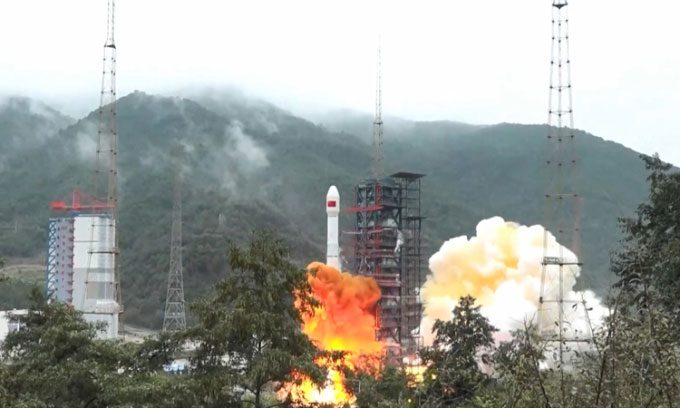The Shijian-21 satellite flew close to another inactive satellite and pulled it up to a higher orbit, reaching the graveyard orbit designated for defunct satellites.
Exoanalytic Solutions, a company that tracks satellites and contracted to provide data for the U.S. Space Force in 2021, detected that the Chinese satellite Shijian-21 (SJ-21) had disappeared from its usual orbit on January 22.

The Long March 3B rocket launches the Shijian-21 satellite into space. (Photo: Xinhua)
SJ-21 then flew close to an inactive satellite belonging to the BeiDou Navigation Satellite System of China. Subsequently, SJ-21 proceeded to pull this satellite out of its geostationary orbit and “escorted” it higher, to the graveyard orbit designated for defunct satellites, thereby avoiding any potential impact or interference with operational satellites.
“We continue to monitor and track SJ-21 to detect its interactions with any known space objects. The ability to maintain surveillance of SJ-21 after this satellite retrieval event is a unique and crucial capability of the commercial Space Situational Awareness (SSA) network at Exoanalytic Solutions,” said Brian Flewelling, the Chief Architect for SSA at Exoanalytic Solutions.
SJ-21 was launched into space on October 24, 2021, by the Long March 3B rocket. This satellite is designed to test and verify technologies aimed at mitigating space debris.
Last November, experts detected SJ-21 moving near an unidentified object, seemingly an intentional synchronization. China has not confirmed this object, but the U.S. Space Force identified it as a potential used AKM rocket engine. Other opinions suggest it could be a test device designed to evaluate SJ-21’s capabilities.
Although SJ-21 may only serve the purpose of peacefully relocating satellites, some experts are concerned that this technology could be used to alter the orbits of any satellite, moving them to graveyard orbits or towards Earth.
The U.S. Space Force has also contracted Northrop Grumman to develop a satellite equipped with a robotic arm capable of repairing and relocating other satellites in orbit. Northrop Grumman has tested this technology in space, and the operational device is expected to launch in 2024.





















































